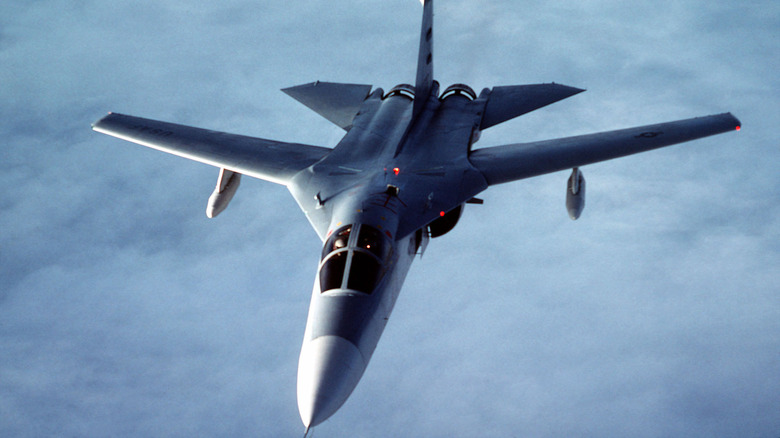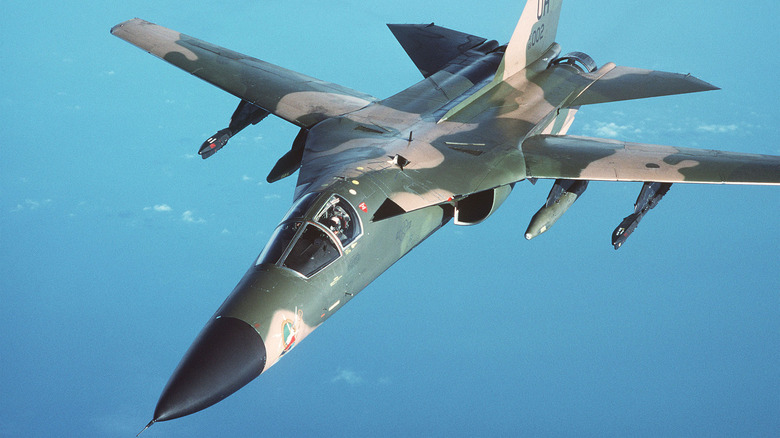The Electronic Warfare Plane Designed To Jam Enemy Signals
Electricity has brought us everything from televisions to Easy-Bake Ovens and USB sticks, but it has also changed the face of warfare. This is especially notable in the field of aviation. During the initial stages of the First World War, air-to-air combat was an impractical endeavor, and pilots were generally deployed to survey opposition activities and movements from a convenient vantage point. Just decades later, during World War II, aircraft such as the legendary Spitfire could fly further and for longer, deploy far more dangerous weapons, and strike opposition targets with infinitely more precision.
Up to 60 million people are estimated to have been killed around the world during this conflict. Of them, civilians would outnumber the deaths of combatants — many of them civilians who were at home and simply vulnerable to new technology when they hadn't been before. Radar and other methods of communication were vital in these efforts to both coordinate troops and defend against those of the enemy. This became ever more significant as that technology advanced further in later decades. As a result, the EF-111A Raven aircraft was an incredibly potent weapon despite having no firepower of its own.
The iconic F-111 aircraft
Ravens, of course, are well known as the highly-intelligent tricksters of the animal kingdom. EF-111A Raven, then, is a very appropriate name for a warplane that had a unique role: a mobile signal jammer. The story of the Raven begins with that of the Aardvark. The F-111 Aardvark was a very different animal, both literally and figuratively.
Per Imperial War Museums curator Emily Charles, the Aardvark was "produced in the 1960s ... designed to be a fighter for the U.S. Air Force and the U.S. Navy." The project cost a cool $75 million, but in the end, the F-111 wasn't suited to the role it was intended for. It was ultimately used by the United States Air Force as a bomber, and a potent one at that.
Charles goes on to explain how it earned its nickname: "its ability to fly close to the ground with terrain-tracking radar gave its name 'the Aardvark,' an African mammal which sniffs along the ground hunting for food." The EF-111A Raven did not have the formidable ordinance that its ground-sniffing predecessor did. It was created in the following decade, it seems, as a modified F-111 with a more subtle yet equally potentially powerful objective: jamming crucial enemy communication and navigation.
Modifying an aardvark into a raven
A Grumman program from the 1970s set about making modifications to just over 40 Aardvark aircraft. Around four tons of complex equipment were added to the underside of the planes, such as receiving antennas allowing them to detect signals from opposing craft. An Electronic Warfare Officer was deployed within the craft, to maintain all of this equipment and interpret the information it was relaying to them.
The goal of this experimentation, Anthony M. Thornborough and Peter E. Davies note in "F-111: Success In Action" was "to build a replacement for the Destroyer able to neutralize enemy electronic defenses with ... directed spot-noise jamming, to obscure friendly aircraft positions ... by selectively blotting out radar-scope displays with 'snow' and swamping automatic gain receivers with electromagnetic interference [and] to deny the enemy both Ground Control Intercept vectors for their fighters and reliable radar acquisition for their SAMs and precision-laid AAA."
The Douglas EB-66 Destroyer, the authors note, was "America's sole land-based dedicated electronic combat aircraft ... [a] blanket-barrage noise-jammer" that was being phased out at the time. By modifying the F-111, technicians had a craft tailored to these goals, more precise and agile than the old Destroyers and suited for a new era of warfare. The Raven was first deployed by the 390th Electronic Combat Squadron and was in use until 1998.


